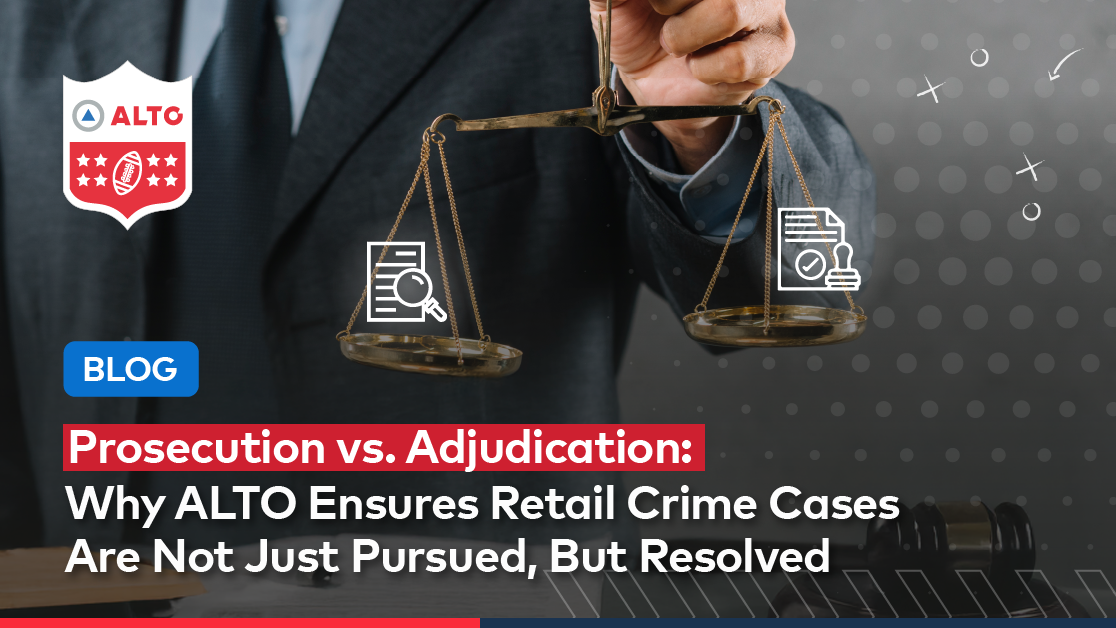
California SB 19: The New Threat Accountability Law Turning Legislation into Real-World Safety

Frederic Moll, ALTO Operations Lead Counsel
California’s new threat accountability law, Senate Bill 19 (SB 19), expands how violent threats are prosecuted in California workplaces, schools, and public institutions.
For California businesses and communities, this represents a major step forward in preventing violence before it happens. It’s not just about punishing harm, it’s about ensuring credible threats are addressed early, consistently, and lawfully.
“The new law gives prosecutors the tools to act before a threat becomes an act,” says Frederic Moll, ALTO’s Operations Lead Counsel. “It’s a recognition that accountability doesn’t start after an incident — it starts the moment someone tries to create fear or harm.”
1. The Law: A Shift Toward Prevention Through Accountability
SB 19 clarifies that credible threats, whether spoken, written, or shared digitally, can now be prosecuted.
This includes threats made against:
- Schools and universities
- Workplaces (including retail stores and distribution centers)
- Houses of worship
- Daycares and medical facilities
The law builds on California Penal Code Section 422 and ensures accountability for those who instill fear or disrupt public safety, not just those who commit the act itself.
In essence: California is broadening the scope of what it means to “protect”, from responding to violence, to proactively stopping it.
2. What It Means for Businesses and Retail Leaders
Expanding the Definition of Workplace Safety
Retailers, offices, and distribution sites are now explicitly covered under the law’s protections.
That means threats made toward employees, customers, or store locations can trigger criminal investigation, giving businesses and prosecutors a stronger legal foundation for deterrence.
Documentation and Evidence Are Critical
Just as with theft or assault cases, documentation is everything.
Retailers should ensure that threats (verbal, written, or digital) are logged, escalated, and shared with law enforcement.
The ability to prosecute often depends on clear, consistent documentation, something ALTO’s model is uniquely designed to support.
Partnerships Will Drive Prevention
This legislation emphasizes collaboration between businesses, law enforcement, and prosecutors, the same foundation ALTO has built across 1,000+ jurisdictions nationwide.
By working together, incidents can be addressed before they escalate into violence or loss.
3. How ALTO Bridges the Gap Between Law and Action
From Threat to Accountability
ALTO transforms incident data, whether theft, assault, or other crime incident, into legal outcomes.
Our teams ensure that businesses don’t just report incidents; they see them through to resolution.
“Like SB 19, our mission is to make sure no credible threat goes unanswered,” Moll says. “Every report, every case file, every court appearance matters, because it can stop something worse from happening.”
Legal Coordination and Advocacy
ALTO’s legal teams collaborate with prosecutors to file and follow up on cases, ensuring every qualifying incident results in appropriate legal action.
That same infrastructure now supports businesses responding to threats, harassment, or violence in the workplace.
Proven Impact
- 92% of ALTO-supported cases result in favorable legal outcomes for victims
- 80% of employees feel safer with ALTO’s support
- 97% of offenders don’t reoffend at ALTO-supported locations
7.4× higher restitution awarded to victims
Aligned with State Goals
California’s new framework mirrors ALTO’s approach: prevention through partnership, deterrence through legal clarity, and safety through consistent accountability.
4. Strategic Steps for Safety, Risk, and Legal Teams
- Update threat-response workflows
Ensure your internal escalation paths are clear: how threats are documented, who reviews them, and how they reach law enforcement. - Integrate accountability metrics
Track incident-to-resolution ratios, threat follow-ups, and recidivism. Accountability should now be a measurable safety KPI. - Collaborate proactively
Establish direct channels with prosecutors, local police, and vendors like ALTO that can operationalize accountability and manage legal workflows. - Train store and site teams
Awareness and documentation training empower employees to recognize credible threats and escalate them appropriately.
5. The Bigger Picture: Safety Starts with Accountability
SB 19 doesn’t just criminalize threats — it reframes them as a public safety issue.
By holding those who spread fear accountable, California is reinforcing what ALTO has long stood for: safety through consequence.
When businesses document, escalate, and follow through, they don’t just protect assets — they protect people, strengthen communities, and restore confidence in justice.
“Whether it’s a retail store, school, or hospital, the principle is the same,” Moll says. “When we connect incidents to outcomes, we prevent the next one.”
About the Author
Frederic Moll is the Operations Lead Counsel for the West Coast at ALTO, based in Seattle. A graduate of Syracuse University College of Law, he spent over 15 years as a Public Defender in Snohomish County, specializing in therapeutic courts. Before joining ALTO, he served as a Judge Pro Tempore in King County District Court, presiding over a broad range of civil and criminal cases.


